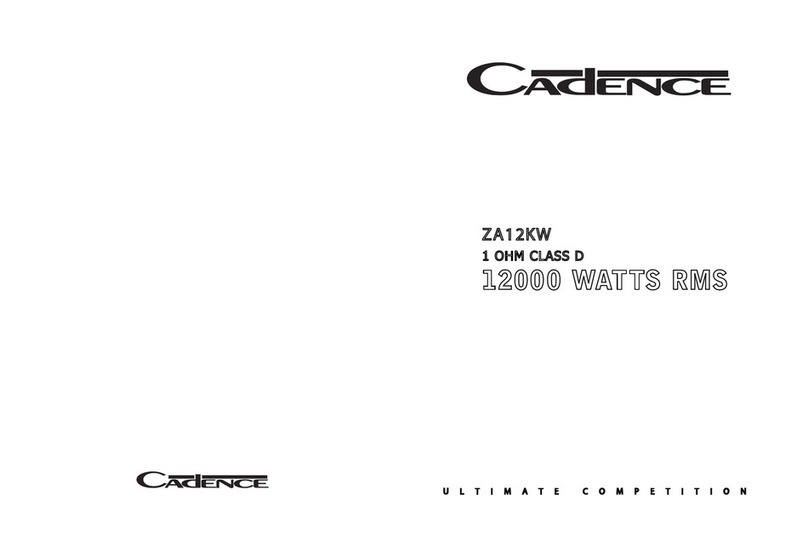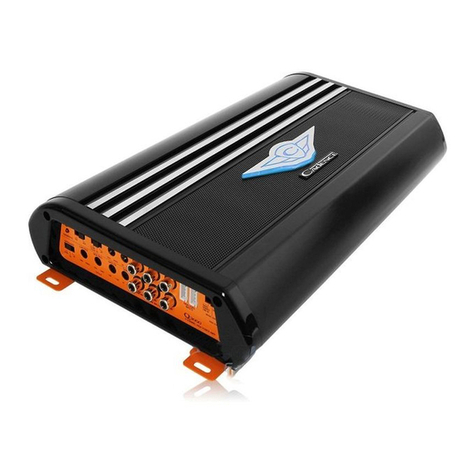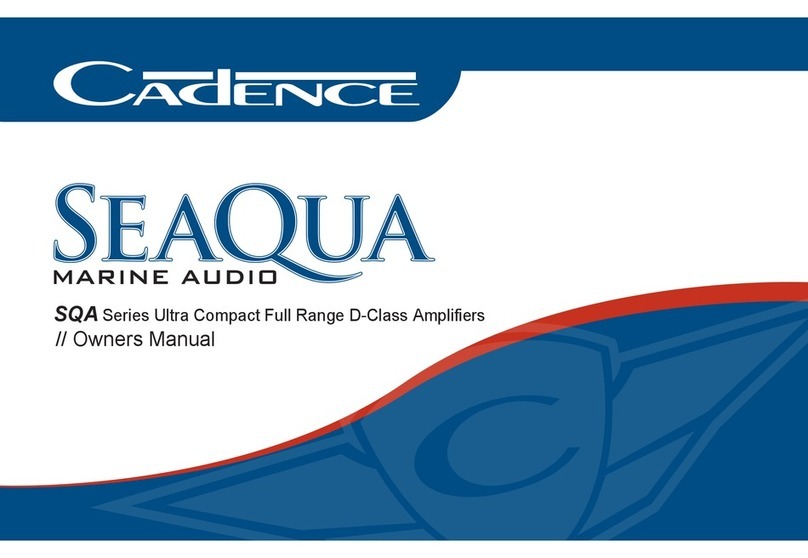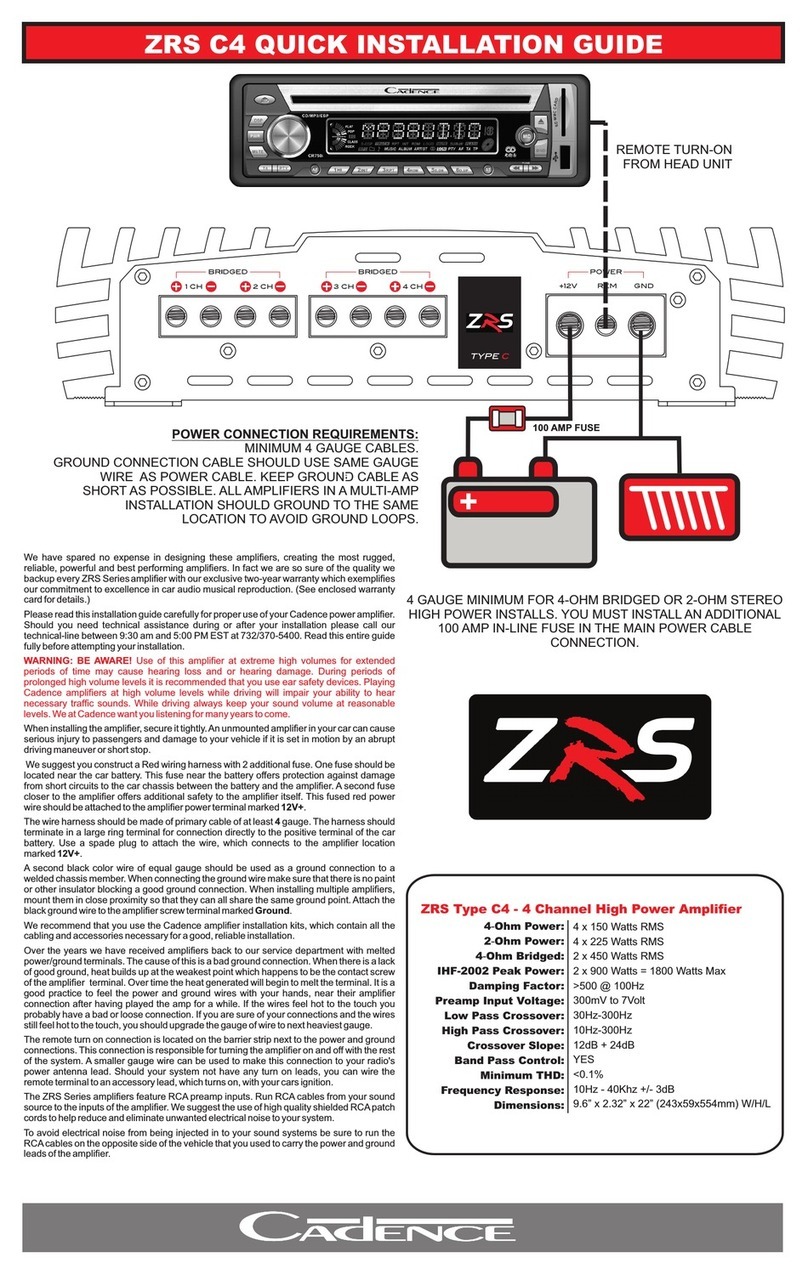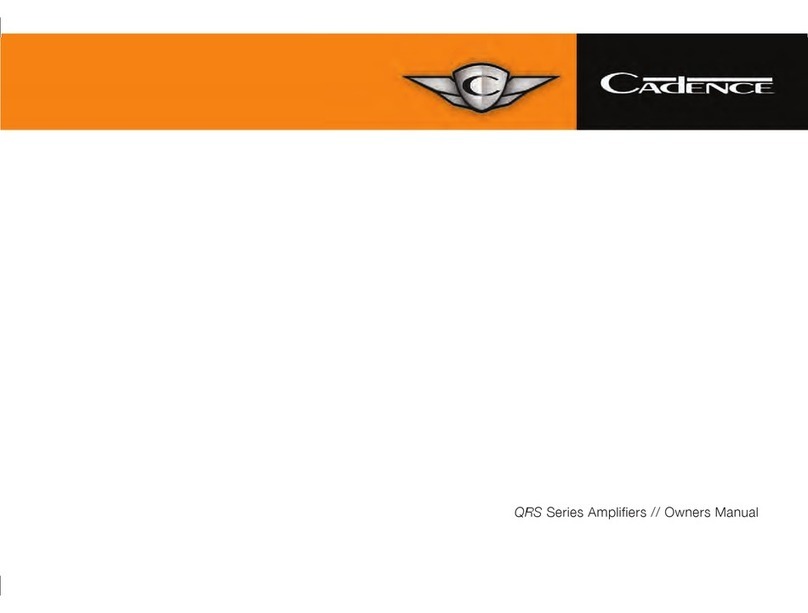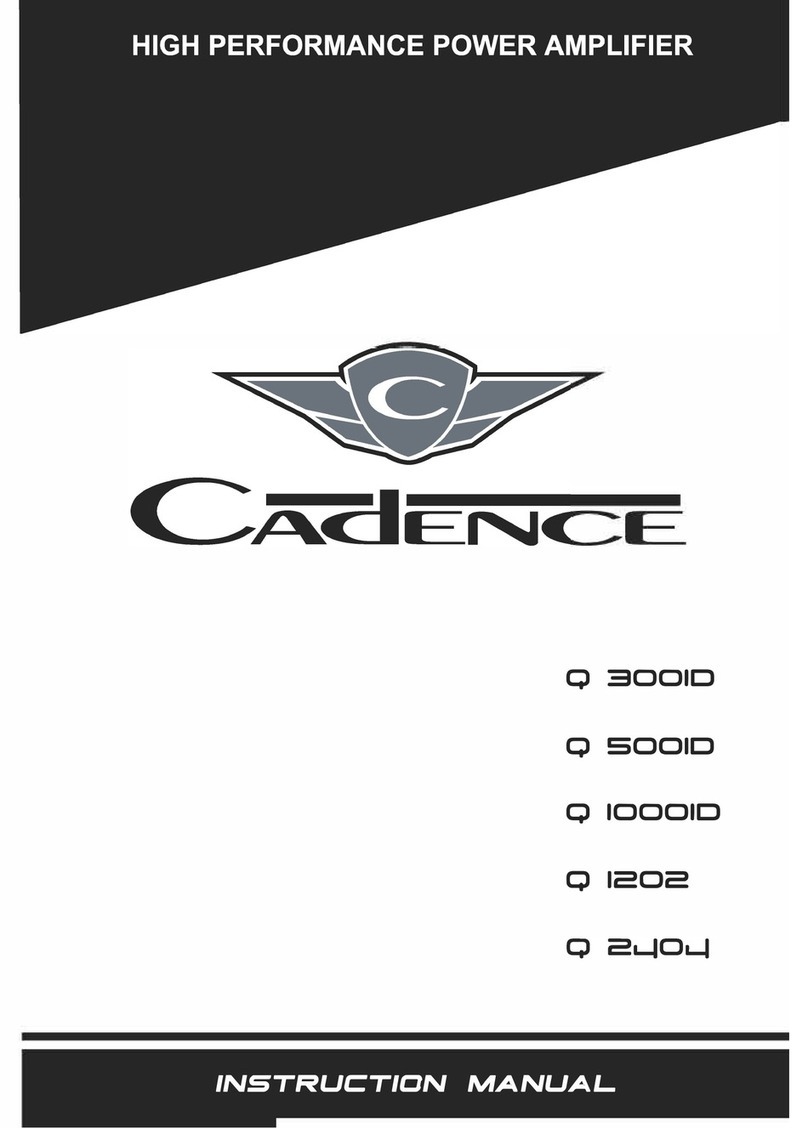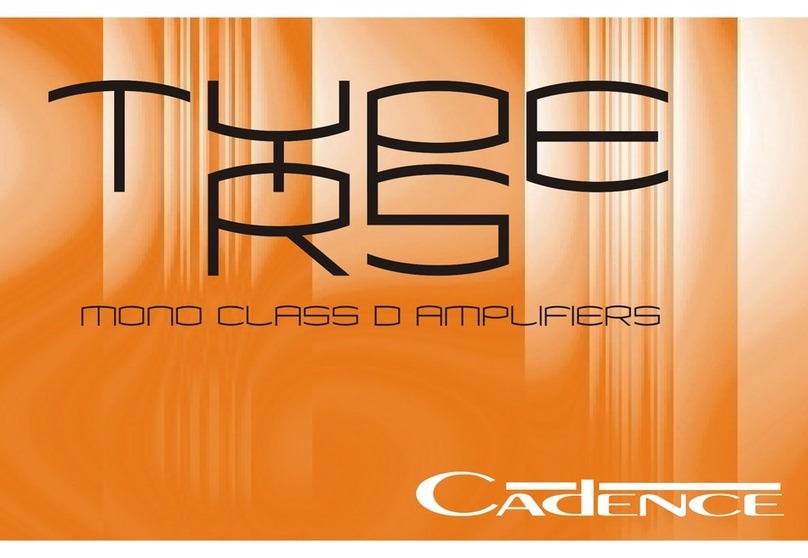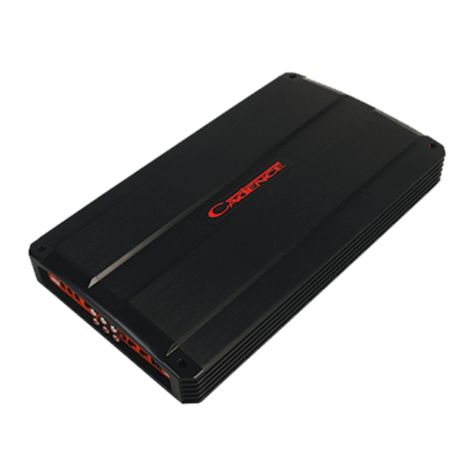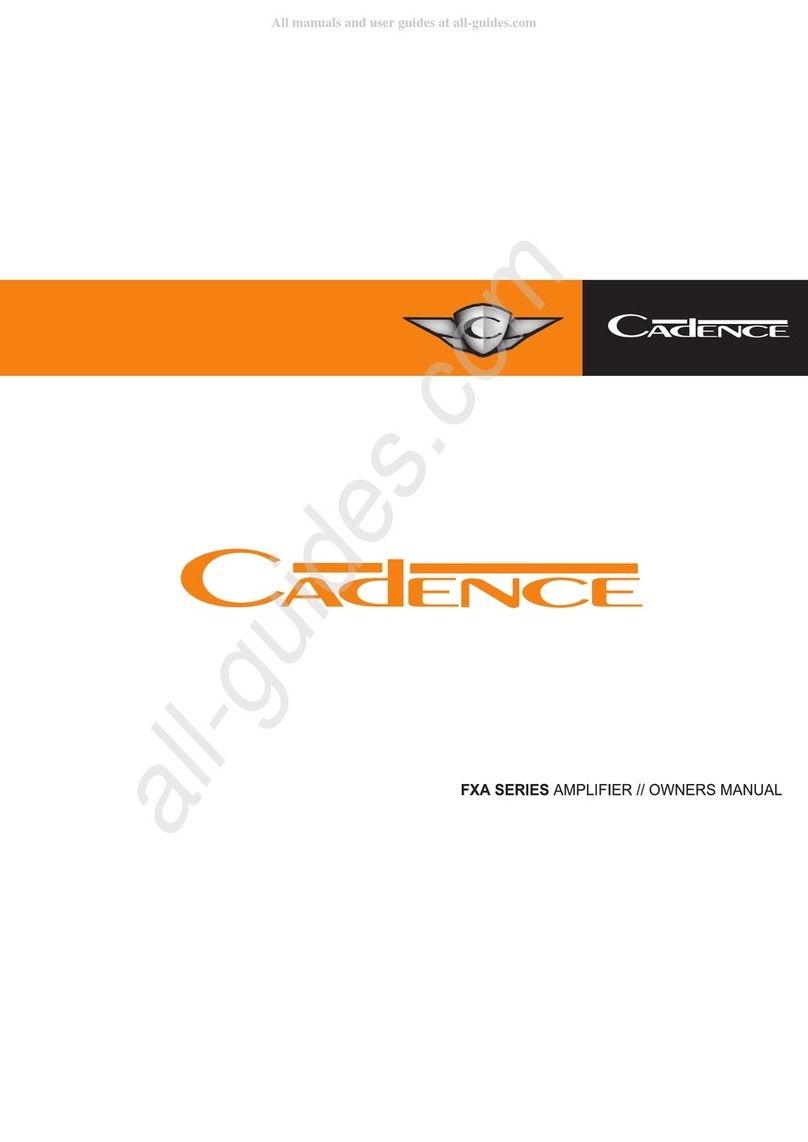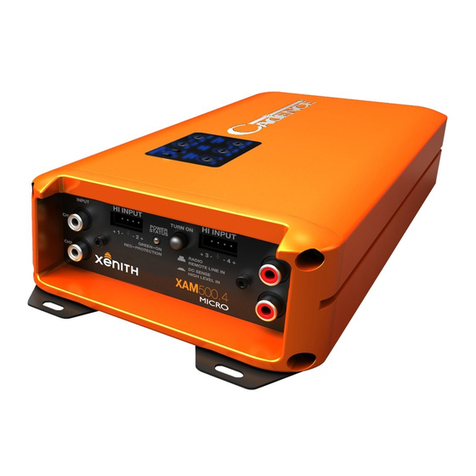The remote turn on connection is located on the barrier strip next to the power and ground
connections.This connectionisresponsibleforturning theamplifieronandoff withtherestof
the system.A smaller gauge wire can be used to make this connection to your radio's power
antenna lead. Should your system not have any turn on leads, you can wire the remote
terminaltoanaccessorylead,whichturnson,withyourignition.
The Q Series amplifiers are supplied with built-in fuses, never replace the fuse that the amp
camewith,withoneofalargervalue.
We suggest you construct a Red wiring harness with 2 additional fuse. One fuse should be
locatednearthe carbattery.Thisfuse nearthebattery offersprotectionagainstdamage from
shortcircuitsto thecar chassisbetween thebattery andthe amplifier.Asecond fusecloser to
theamplifieroffersadditionalsafetytotheamplifieritself.Thisfusedredpowerwireshouldbe
attachedtotheamplifierpowerterminalmarked12V+.
The wire harness should be made of red primary cable of at least 4-8 gauge. The harness
should terminate in a large ring terminal for connection directly to the positive terminal of the
car battery. Use a spade plug to attach the wire, which connects to the amplifier location
marked12V+.
Asecondblackcolor wireof equalgaugeshould beused asa groundconnectionto awelded
chassis member. When connecting the ground wire make sure that there is no paint or other
insulatorblockingagoodgroundconnection.Wheninstallingmultipleamplifiers,mountthem
in close proximity so that they can all share the same ground point.Attach the black ground
wiretotheamplifierscrewterminalmarkedGround.
We recommend that you use the Cadence ZIK-8 or ZIK-4 amplifier installation kit, which
containsallthecablingandaccessoriesnecessaryforagood,reliableinstallation.
Over the years we have received many an amp back to our service department with melted
power/groundterminals.Thecauseofthisisabadgroundconnection.Whenthereisalackof
good ground heat builds up at the weakest point which is the contact screw of the terminal.
Over time the heat generated will begin to melt the terminal. It is a good practice to feel the
power and ground wires with your hands, near their amplifier connection after having played
the amp for a while. If the wires feel hot to the touch you probably have a bad or loose
connection. If you are sure of your connections and the wires still feel hot to the touch, you
shouldupgradethegaugeofthewiretonextheaviestgauge.
AUDIOPREAMPINPUT
USINGTHEBUILT-IN LOWPASSELECTRONICCROSSOVER
The Q Series amplifiers feature RCA preamp inputs. Run RCA cables from your sound
source to the inputs of the amplifier. We suggest the use of high quality shielded RCApatch
cordstohelpreduceandeliminateunwantedelectricalnoisefromyoursystem.
Be sure to run the RCAcables on the opposite side of the vehicle that you used to carry the
powerandgroundleadsoftheamplifier.
All the Q Series amplifiers feature 12dB per octave fully adjustable low-pass and high pass
electronic crossovers.
ForLow Pass systems, set the crossovermode switch to LOW PASS. Now theknob marked
FREQUENCY will control the low pass frequencies from 50Hz to 250Hz.Afrequent mistake
made is setting the low pass frequency too low, especially when using vented subwoofer
enclosures. We recommend that for most installations you do not set the frequency knob
lowerthan100Hz(the12o’clockposition).
Whenusing the amplifiersfor component speakers orcoaxials, you willwant to setthe mode
switch to HI PASS. The FREQUENCY control knob adjusts the high pass frequencies
between50Hzand250Hz.Donotattachtweetersdirectlytotheseamplifiers,eveninthehigh
pass mode without a secondary passive crossover to protect them. 250Hz high pass is not a
frequencyhighenoughfortweeters.
QSeriestwochannelcrossoversection,locatedunderthelightupplasticplate.
